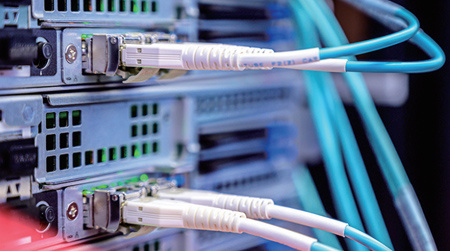25
2025
-
05
Unraveling the Mysteries of Fiber Optic Splitters in Today's Tech Landscape
The Backbone of Modern Connectivity
In the fast-paced world of telecommunications, one device has become essential yet often overlooked: the Fiber Optic Splitter. This nifty little gadget plays a crucial role in distributing data across networks, ensuring that everyone stays connected without a hitch. But what’s the scoop on this technology? Let’s dive into the nitty-gritty!
What is a Fiber Optic Splitter?
At its core, a Fiber Optic Splitter is a device that splits a single optical fiber into multiple fibers. Imagine it as a traffic controller for light signals, directing them to various destinations without losing quality. This makes it an absolute game-changer for network providers!
Why the Buzz?
With the demand for high-speed internet skyrocketing, the importance of Fiber Optic Splitters has surged. They allow multiple users to share a single fiber connection, making the most out of existing infrastructure. Talk about efficiency!
Types of Fiber Optic Splitters
There are a few types of Fiber Optic Splitters to consider:
- Fused Biconical Taper (FBT): A classic choice, known for its simplicity and effectiveness.
- Planar Lightwave Circuit (PLC): A more modern option that offers better performance over longer distances.
- Star Type and Tree Type: These splitters are designed for specific configurations and can be customized based on the network’s needs.
Industry Trends and Developments
So, what’s trending in the world of Fiber Optic Splitters? Well, let’s just say innovation is the name of the game. With the rise of 5G technology, the demand for faster and more efficient data transmission has skyrocketed. This has led to advancements in splitter technology, including:
- Increased Port Density: More connections in a smaller footprint.
- Enhanced Durability: Splitters that can withstand harsher environments.
- Cost-Effective Solutions: As technology advances, prices are dropping, making them accessible to more users.
Real-World Applications
From large enterprises to small businesses, Fiber Optic Splitters are making waves everywhere. They’re used in:
- Telecommunication networks
- Data centers
- Residential areas
- Broadcasting services
Whether it’s streaming your favorite show or running a multi-million dollar operation, these splitters are the unsung heroes of our digital age.
Challenges and Considerations
Of course, every rose has its thorns. While Fiber Optic Splitters are amazing, they come with challenges too. Installation can be tricky, and if not done right, it can lead to signal loss and decreased performance. Not to mention, the upfront costs can sometimes be a hurdle for smaller operations.
Looking Ahead
As we move forward into an increasingly connected world, the role of Fiber Optic Splitters will only expand. With the growth of IoT devices and smart homes, the need for reliable, high-speed internet will be paramount. Companies are investing in research to enhance the capabilities of splitters, ensuring they can keep up with the ever-increasing demand.
Final Thoughts
In conclusion, Fiber Optic Splitters may not be the flashiest gadgets out there, but they’re the backbone of modern communication. As technology continues to evolve, understanding these devices will be critical for anyone in the tech industry. So, the next time you enjoy a seamless video call or stream your favorite series, take a moment to appreciate the Fiber Optic Splitter that makes it all possible!
Relevant news
CONTACT US
Add: No.1 Yonghe Third Road, Industrial Functional Zone, Chengdong Street, Yueqing City, Wenzhou City, Zhejiang Province
Tel: +86-577-62315998
Wechat : +86-15067871794
Fax: +86-577-62328331
E-mail: bonnie.chen@ouyahua.com











